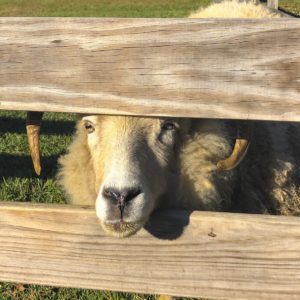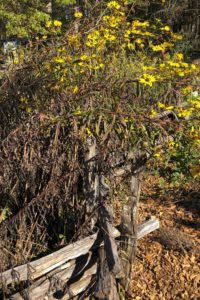Editors Note: In preparation for this article, I visited with the Greenville Master Gardener volunteers at the Roper Mountain Butterfly and Heritage gardens, including this fellow in the photo above. I’d like to thank Mary Stark for a great tour and discussion and to Susan Tankersley for her edit of this article. I look forward to volunteering at the gardens next year! Photos and text by Doug Lockard, Nov 2020
Fall is here again and with it brings new opportunities for gardeners to provide meaningful support in their Living Landscape by providing food, water and shelter for our diverse range of beneficial native insect’s, including moths, beetles, flies, wasps, and other ‘bugs’. While human attitudes about Autumn seem to run the gamut from joy to sadness, for our wildlife, it’s all about survival. Finding food, water sources and safe shelter that’ll take them through the winter months, and support reproduction is a never-ending task, and only grows more challenging in Winter. In this essay, we’ll make you aware of the impact you can have in your own Living Landscape with a few practical practices that will make life a little easier for our tiny friends.
Non-Beneficial Plants: Those scraggly plants that have little to offer from now until spring can be cut back to make the garden a bit tidier over the winter, and to make life a little easier for the gardener in the spring. Plants in this group might include iris, daylilies, yarrows, and daisies.
Garden Health: Many pathogens, particularly fungal, can overwinter in plant debris and cause infections the following year when growing conditions are right. This is the time to remove diseased top growth. Beebalm (Monarda) and garden phlox (Phlox paniculata) are good examples of this as they often become infected with powdery mildew toward the end of the growing season. Avoid composting diseased plant material because most backyard compost piles do not get hot enough to kill pathogens.
Bloom & Pr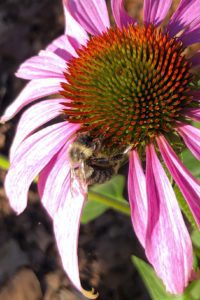 une Rule: Some of our plants have already formed their flower buds for next year and should be pruned AFTER they flower in the spring and before the 4th of July. Examples of this are Azalea, Rhodendron, Flowering cherry, Forsythia, Lilac, Oakleaf hydrangea, Rhododendron, Saucer or Star magnolia, Spirea, and Viburnum. Evergreens can be pruned in mid-spring, after the plants have begun to flush lush new growth. A good rule of thumb is that a plant, once established, can survive the loss of one-third of its leaves through pruning or herbivory.
une Rule: Some of our plants have already formed their flower buds for next year and should be pruned AFTER they flower in the spring and before the 4th of July. Examples of this are Azalea, Rhodendron, Flowering cherry, Forsythia, Lilac, Oakleaf hydrangea, Rhododendron, Saucer or Star magnolia, Spirea, and Viburnum. Evergreens can be pruned in mid-spring, after the plants have begun to flush lush new growth. A good rule of thumb is that a plant, once established, can survive the loss of one-third of its leaves through pruning or herbivory.
Food Supply: Leaving plants standing in the winter months can provide a reliable food source for our over-wintering wildlife, including our important beneficial insects. Here are some example SC natives that benefit the wildlife that have co-evolved along with them in our habitat: Purple coneflowers (Echinacea), black-eyed susan (Rudbeckia), coreopsis (Coreopsis), sunflower (Heliopsis), prairie gay feather (Liatris), switchgrass (Panicum virgatum) and little blue stem (Schizachyrium scoparium). The seed heads from these plants provide natural foraging habitat for native wildlife. Watch for finches, sparrows, chickadees, juncos and jays
- Flowering Plants: May birds and insects feed on the seed heads throughout the winter like this native Swamp Sunflower (Helianthus Angustifolius) at left, as well as Asters (Symphyotrichum sp), goldenrod (Solidago sp)
- Native perennials top the list of food sources, including goldenrods (Solidago sp), asters (Symphoytrichum sp), sunflowers (Helianthus), milkweed (Asclepias), Penstemon, native mints (Pycnanthemum sp), black-eyed susan (Rudbeckia sp) Ironweed (Vernonia sp), Joe Pye Weed (Eutrochinum), Conflower (Echinacea spp), Blazing Star (Liatris), and Bee Balm (Monarda), all top the list of perennials.
- Goldenrod alone is a magnet for beneficial solitary wasps and soldier beetles, 11 specialist bees, scores of butterfly and moth caterpillars, goldenrod flies, wasps, and midges.
- New England aster, (Symphyotrichum novae-angliae), one of the last to bloom in the garden, is visited by queen bumblebees gathering a last bit of sustenance before winter hibernation.
- Woody plants also both food and habitat, including: Winterberry Ilex verticillate), Beautyberry (Callicarpa americana ), Redbud (Cercis canandensis), Sumac (Rhus sp), Devil’s walking stick (Aralia spinosa), are excellent examples of woody plants that provide nutrient-packed food for birds and small animals throughout the winter months.
Water Supply: Insects require water like all other living things, but birdbaths and ponds are too deep for them, posing a drowning hazard. Butterflies obtain moisture and minerals from mud and shallow puddles. Create a shallow ‘pudding dish’ filled with pebbles and sand to hold water.
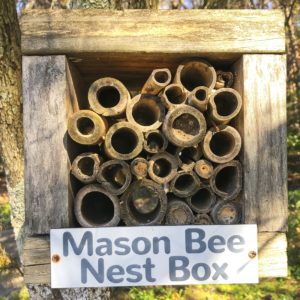 Providing Shelter: The availability of nesting and overwintering habitat is one of the most important factors influencing populations of native bees and other beneficial insects. Our beneficial insects here in the Upstate of South Carolina require safe, sheltered places to lay eggs, raise their young, and overwinter. And they have evolved to use those found in our landscape such as leaf litter, dead stems and logs, even the abandoned nests of wasps and rodents. These items are often the target of the Autumn clean-up. Consider meeting our beneficial insects’ half-way:
Providing Shelter: The availability of nesting and overwintering habitat is one of the most important factors influencing populations of native bees and other beneficial insects. Our beneficial insects here in the Upstate of South Carolina require safe, sheltered places to lay eggs, raise their young, and overwinter. And they have evolved to use those found in our landscape such as leaf litter, dead stems and logs, even the abandoned nests of wasps and rodents. These items are often the target of the Autumn clean-up. Consider meeting our beneficial insects’ half-way:
Native Bees: Most nest underground and avoid bark-mulched areas in favor of ground cover. Many native bee species must find hollow stems in which to raise their young and overwinter such as raspberry, blackberry, goldenrod, sumac, and even roses for their hollow canes. Leave the stems up through early spring. Avoid disturbing established bee nests, too—they can be intricate, and take lots of energy to construct.
- Butterflies & Moths and some other insects overwinter as eggs or pupae in the leaf litter near their host plants.
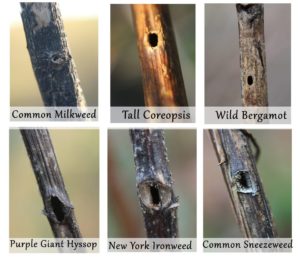
- Insect Hotels: These can be a clever way of creating interesting focal points in the garden while providing vital habitat for over-wintering insects. Leafcutter, mason, and blue orchard bees, as well as solitary wasps, lady beetles, and other insects make use of these attractive, functional structures, which can be particularly difficult to find in urban and sub-urban environments.
Winter Interest: Dried stalks, seedpods and leaves can add a different dimension to the garden. Switchgrass for instance, offers color, movement and texture. The blackened seedpods of false indigo (Baptisia) or sea holly (Eryngium) make an interesting statement. Plants with evergreen foliage such as Christmas fern (Polystichum acrostichoides) can wait until the spring for clean-up. The bark on the Red Twig Dogwood (Cornus sericea) and the Yellow Twig Dogwood (Cornus sericea) are other good examples.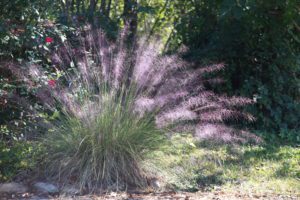
Plant Preference: Some plants just seem to prefer to be left alone until spring, for a variety of reasons. Ornamental grasses, for instance, should be kept around all winter to protect the bases of the plants, where new growth will appear in the spring. Other Hibiscus can be cut back to about 6 inches from the ground. Wait until you see the first signs of growth in spring on your summer and fall blooming Clematis
Photo Credits: Taken by Doug Lockard at Roper Mountain in Nov’20 except the 6-image montage which was provided by Saturnia Farms with permission.
Links:
- Xerces Society: Natural Nesting & Overwintering Habitat for Pollinators & Other Beneficial Insects
- Xerces Society: Monarch Necter Plants of the Southeast
- Brooklyn Botanical Garden: Make Your Garden A Haven for Diversity
Comments Welcome!

